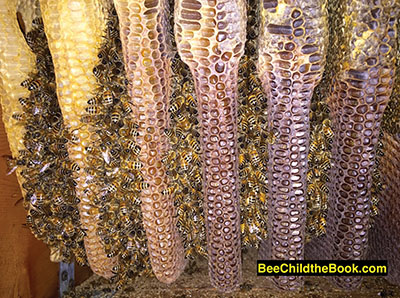
For a few cold winters, I lived in an old thin-walled trailer heated by a couple of small kerosene heaters many years ago. When bitter, frigid winds buffeted the trailer, the dainty window curtains that hung inside twitched out the timing of the blasts. On the mini kitchen counter, freezing cold transformed common items: a sponge became a little cinder block cemented to one spot; even a cup, wet on the bottom, became welded to the counter like a pipe sticking out of it.
I was working on my undergraduate degree at Virginia Tech, and living up in the mountains in Blacksburg, Virginia. The higher elevation meant I experienced weather more common in regions much further north with colder, more brutal winters than what a mid-Atlantic state typically experiences.
Part of my informal collegiate education was learning that household items changed when subjected to bitter cold. In my frozen trailer, mornings were the most memorable. Of course, I had frozen pipes, and I fixed them with my tools, but what about the unexpected, when one lives alone in an abode only a little warmer than the outside?
Physics majors were required to take a five-hour calculus course. That meant calculus every school day (and homework every weeknight to be ready for the next day). I always signed up for an 8:00 a.m. class, and never had a problem finding an open seat (imagine that). Getting ready to trudge off to campus early on a bitter cold morning, I learned something shocking about the indoor carpet that came furnished with the trailer. The carpet crunched under my boots. With every step, I heard a faint crunch, crunch, crunch. Yes, I had crunchy carpet, because it froze. And another greeting, the walls in my trailer sparkled from frost. Perhaps I needed better ventilation for my abode, this little hive with wheels. The cold had transformed my trailer into a strange place.
How is it for bees? Their hives teem with life when they are warm. Then winter comes. Lifeless cold invades the hives. What do they do when temperatures plummet? Let’s look inside a hive in the winter when it is cold.
The beginning of last winter (2017/18) had some cold periods; generally though, by about mid-December, my opportunities for taking thermal images had been meager. The cold had not yet hit. I was not concerned. My Piedmont Virginia location typically brought a few mornings in the teens. That was cold enough for taking thermal images of my full-size top-bar observation hives. The colonies were wintering in the bee house. I only had to remove the glass sides, which were merely attached to the hives by a few well-worn strips of duct tape. That left the colony in full view.
As the year changed, remember what happened? I do and so did my hands, frozen by the cold. Arctic air, extremely frigid, plunged southward. Temperatures took a free fall. And for days, we wondered how low they would go. Plumbers became superheroes. They crawled under cold houses, hunting frozen pipes. Crawling around under our house, I held the flexible dryer hose disconnected from the outside vent. I aimed it up into the north wall of the house, where unfortunately the main water pipe went. I blasted in warm air from the dryer, attempting to unfreeze our pipes. And the hot air pumped out, but still no water. Later, we would learn from the plumbers, our pipes had frozen–underground (in the pump house). Neither we, nor the previous owners, had ever taken precautions to protect the pipes underground, as the cold and its duration were so unusual.
While waiting waterless for the plumbers to get to us, I could think of one good diversion–see how the bees were surviving the intense cold with thermal images. These images would mimic what the bees experience in Canada during their winter; it was that cold.
I could not manipulate the small sensitive controls on the iPhone with bulky winter gloves. (The phone connected to the thermal camera). So no gloves. That limited my photography sessions to only a few minutes as the temperature could dip down to around 0°F (-17.8°C) or bottom out just a little higher. I parked the bee truck near to colonies, leaving the heat on. Toward the end of the brief photography session, my hands would be aching, my fingers stinging. The truck provided a place for a quick warm up. My hands needed it desperately.
Figure 1 shows the colony contracted into its winter cluster. While the winter cluster is easily described as a big ball of bees, the hidden reality in the darkness of the hive differs greatly with that simple and pleasant abstraction. Although bee movement becomes greatly restricted in the cold, the winter cluster is in intimate contact with its honeycombs. The winter cluster and honeycombs form layers of bees and combs. This layering becomes even more pronounced when seeing the hive’s interior compared to the heat produced by the bees (see Figure 2). If the cluster were round, then the slices of the cluster (between the combs) would be discs of varying sizes. (The larger discs would be in the middle and the smaller ones towards the ends.)
The morning of January 2, 2018 was bitterly cold. I was taking thermal images of a strong colony with the spot temperature gauge on. This option recorded the temperature from the little circle in the aiming sight seen on the images. With the cluster contracted towards the center of the combs, the edge of the combs became exposed to the cold.
I wanted to compare the temperatures of the cold edge of the comb to the surface of the cluster. The surface of the cluster was withdrawn into a gap with comb on both sides. That configuration might have affected the temperature readings on the surface of the cluster. (I discarded temperature readings that were….


